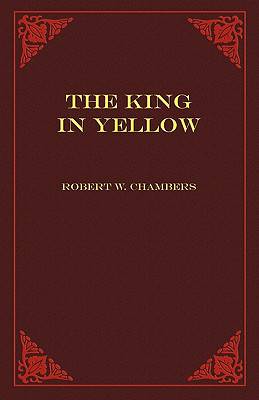
Door een staking bij bpost kan je online bestelling op dit moment iets langer onderweg zijn dan voorzien. Dringend iets nodig? Onze winkels ontvangen jou met open armen!
- Afhalen na 1 uur in een winkel met voorraad
- Gratis thuislevering in België vanaf € 30
- Ruim aanbod met 7 miljoen producten
Door een staking bij bpost kan je online bestelling op dit moment iets langer onderweg zijn dan voorzien. Dringend iets nodig? Onze winkels ontvangen jou met open armen!
- Afhalen na 1 uur in een winkel met voorraad
- Gratis thuislevering in België vanaf € 30
- Ruim aanbod met 7 miljoen producten
Zoeken
Omschrijving
The central cycle of macabre stories, set in a then-future 1920's Paris and America, center on a fictitious play "The King in Yellow" the reading of which drives one mad. The color yellow was an evocative element of the decadent movement-typified by the notorious literary journal The Yellow Book and Charlotte Perkins Gilman's short story "The Yellow Wallpaper." Chambers work bridges the gap between the decadent literature of the 19th century and the fantastic pulp fiction of the twentieth. Chambers can be viewed as a direct pre-cursor to H.P. Lovecraft and his particular style of fantastic horror. Lovecraft first read The King in Yellow in the late 1920's. The stories were highly influential on the younger writer-later incorporating references to them in his own works such as "The Call of Cthulhu" and his "History of the Necronomicon."
Specificaties
Betrokkenen
- Auteur(s):
- Uitgeverij:
Inhoud
- Aantal bladzijden:
- 250
- Taal:
- Engels
Eigenschappen
- Productcode (EAN):
- 9781608640195
- Verschijningsdatum:
- 15/01/2010
- Uitvoering:
- Paperback
- Formaat:
- Trade paperback (VS)
- Afmetingen:
- 140 mm x 216 mm
- Gewicht:
- 322 g

Alleen bij Standaard Boekhandel
+ 30 punten op je klantenkaart van Standaard Boekhandel
Beoordelingen
We publiceren alleen reviews die voldoen aan de voorwaarden voor reviews. Bekijk onze voorwaarden voor reviews.











